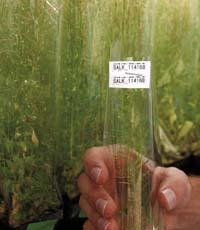Clonic plants, soon in the garden

Science has published a method for obtaining clonic varieties of the plants we eat. The method has been developed at the French Institute of Agrarian Research and, although for the moment it has only been tested at the plant of Arabidopsis thaliana --a model of typical laboratory plants A. thaliana -, has managed to create clones of a seed.
Most of the varieties currently grown are hybrids, that is, they are formed by crossing two genetically different plants with each other. These hybrids are often more productive and resistant, but these characteristics are only achieved in the first generation after crossing. In the next generations they are lost, since in sexual reproduction genes are mixed. Consequently, obtaining seeds from hybrid varieties must always start from original crossings.
To avoid this, they have combined mutations that prevent the mixing of genes in sexual reproduction. And so they have managed to create clones through the seeds, that is, successors with the same characteristics. According to them, the method will be useful for many plants and will also serve to shorten the time needed to create new varieties in the laboratory.
In addition, they point out that it will allow farmers to maintain and disseminate their varieties, thus avoiding the annual purchase of seeds, as with current hybrids.





